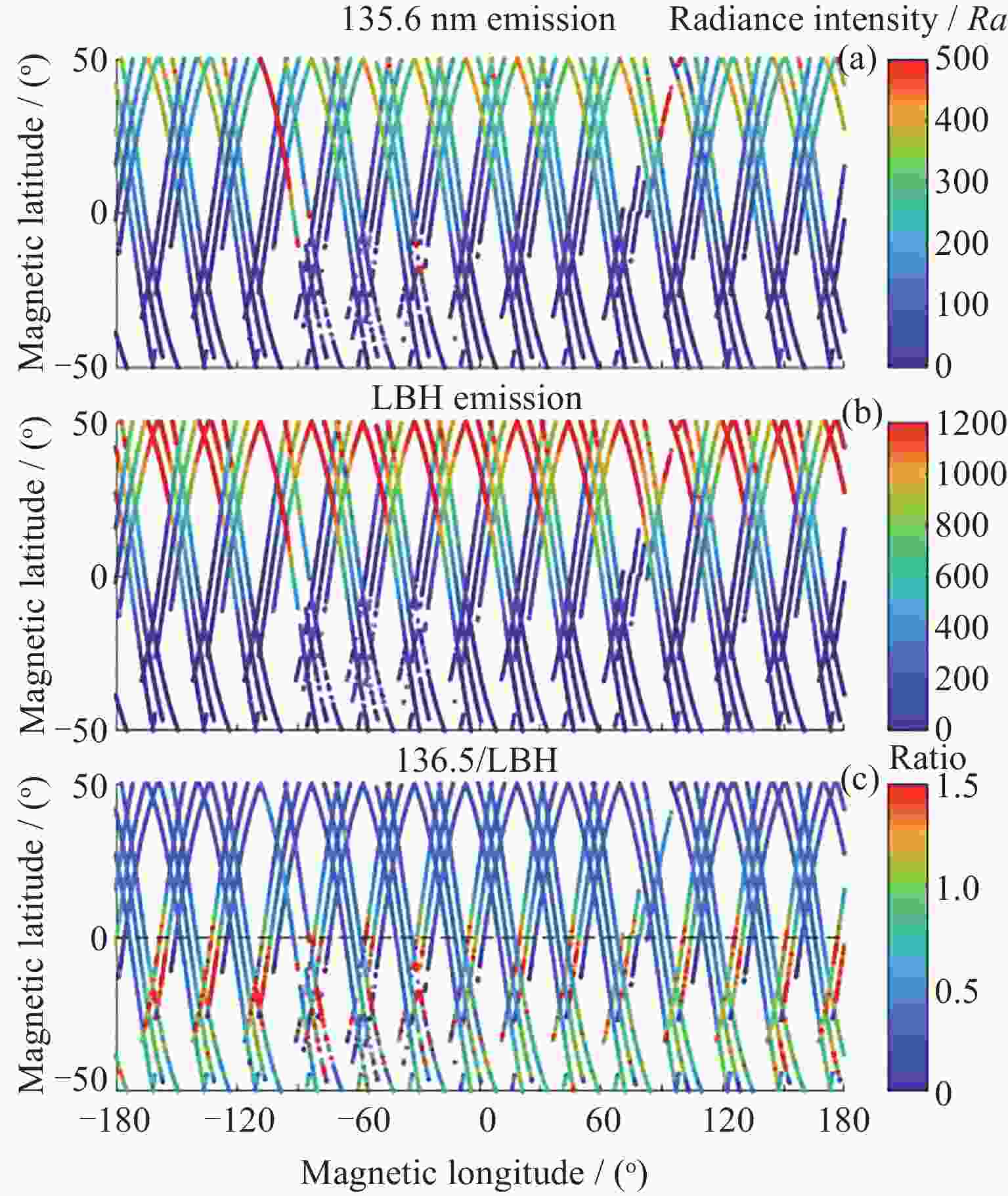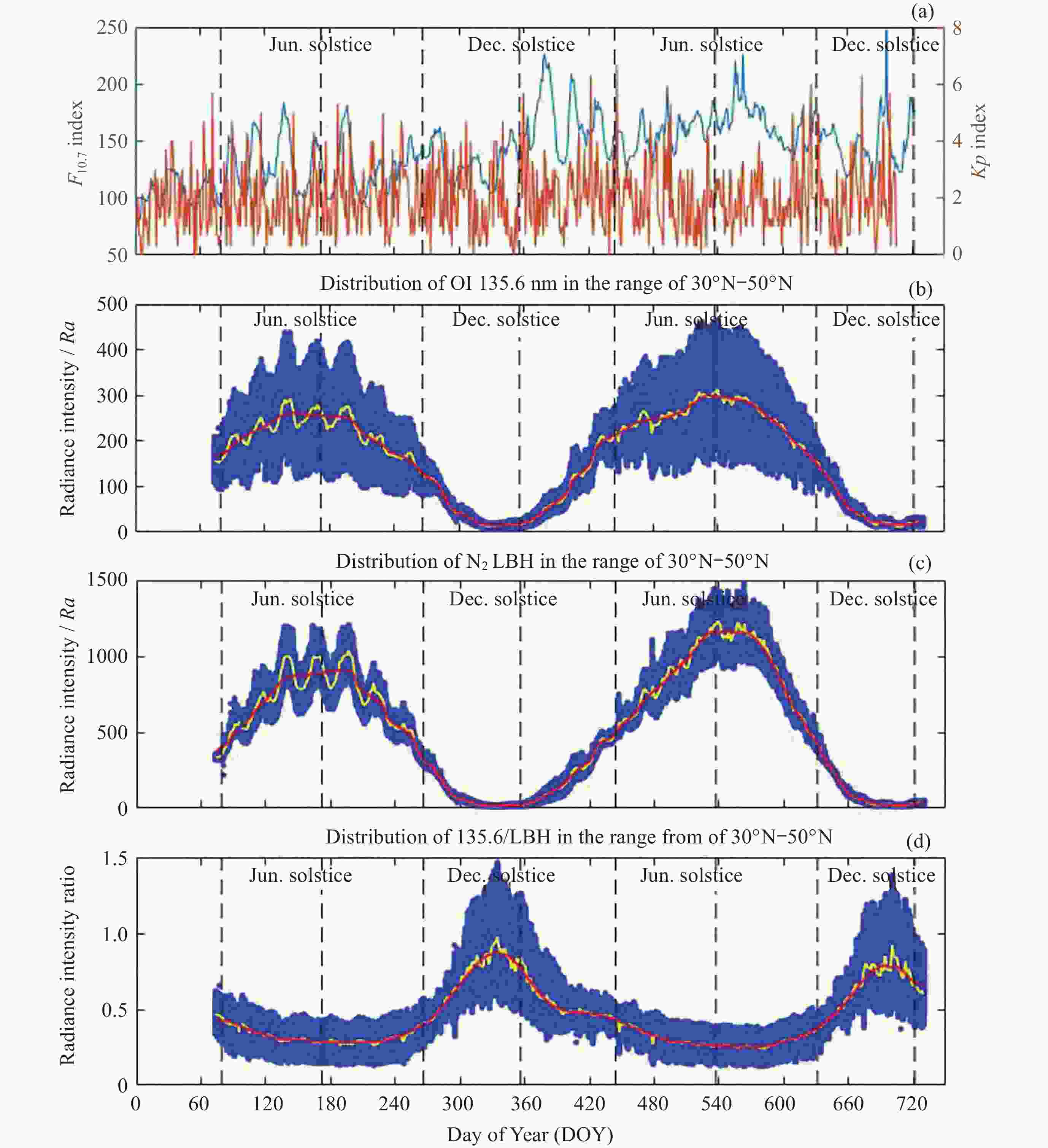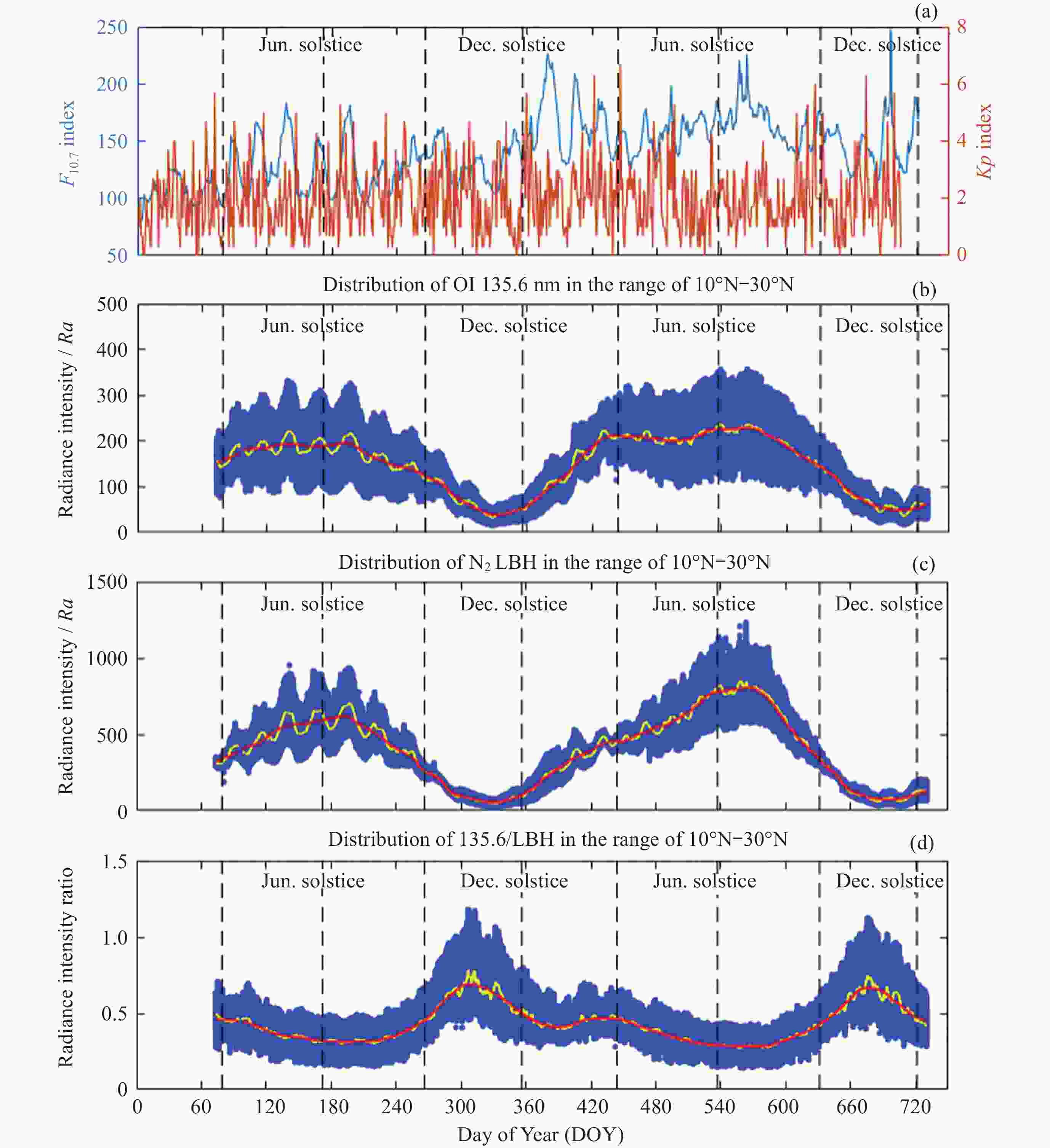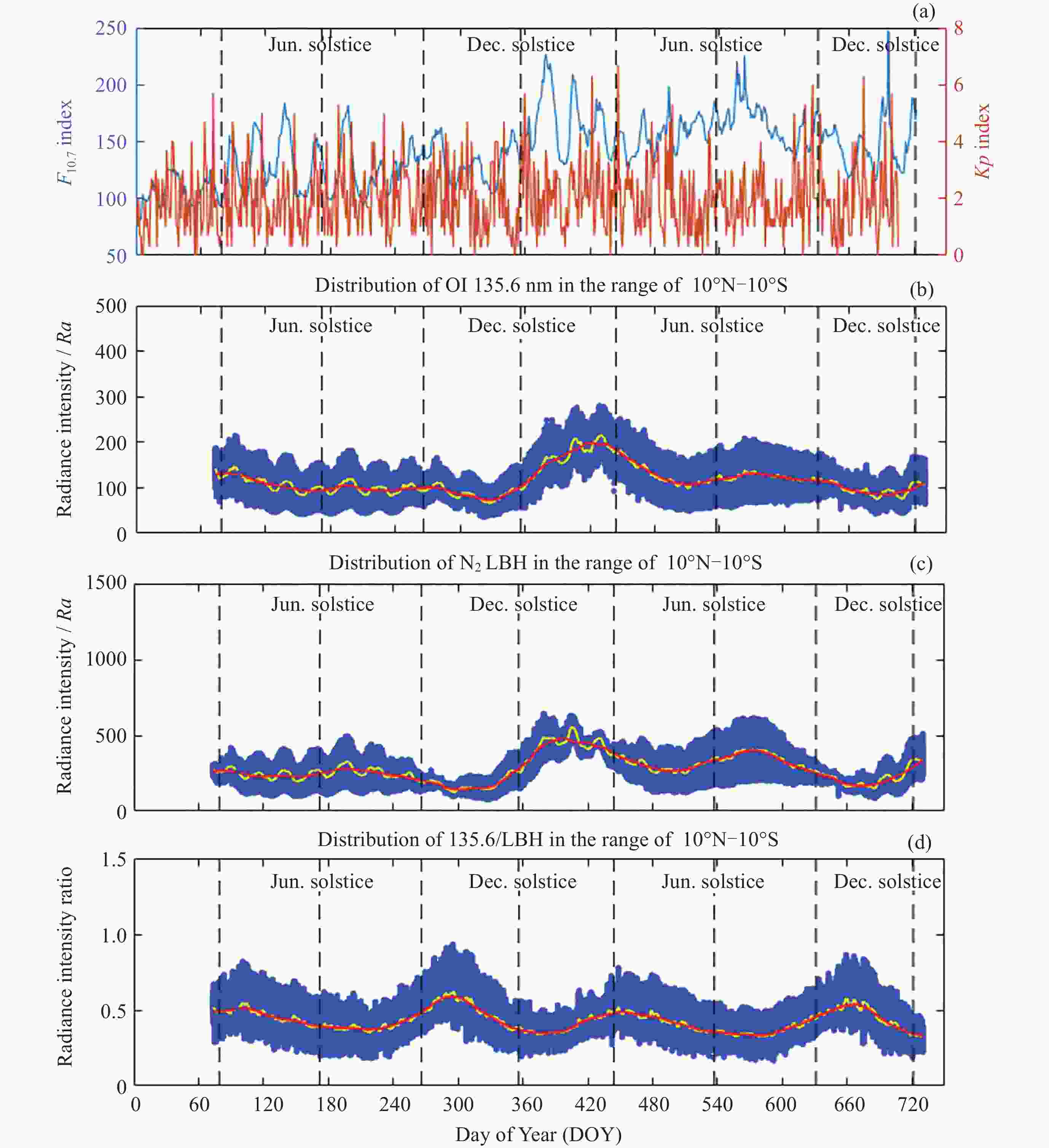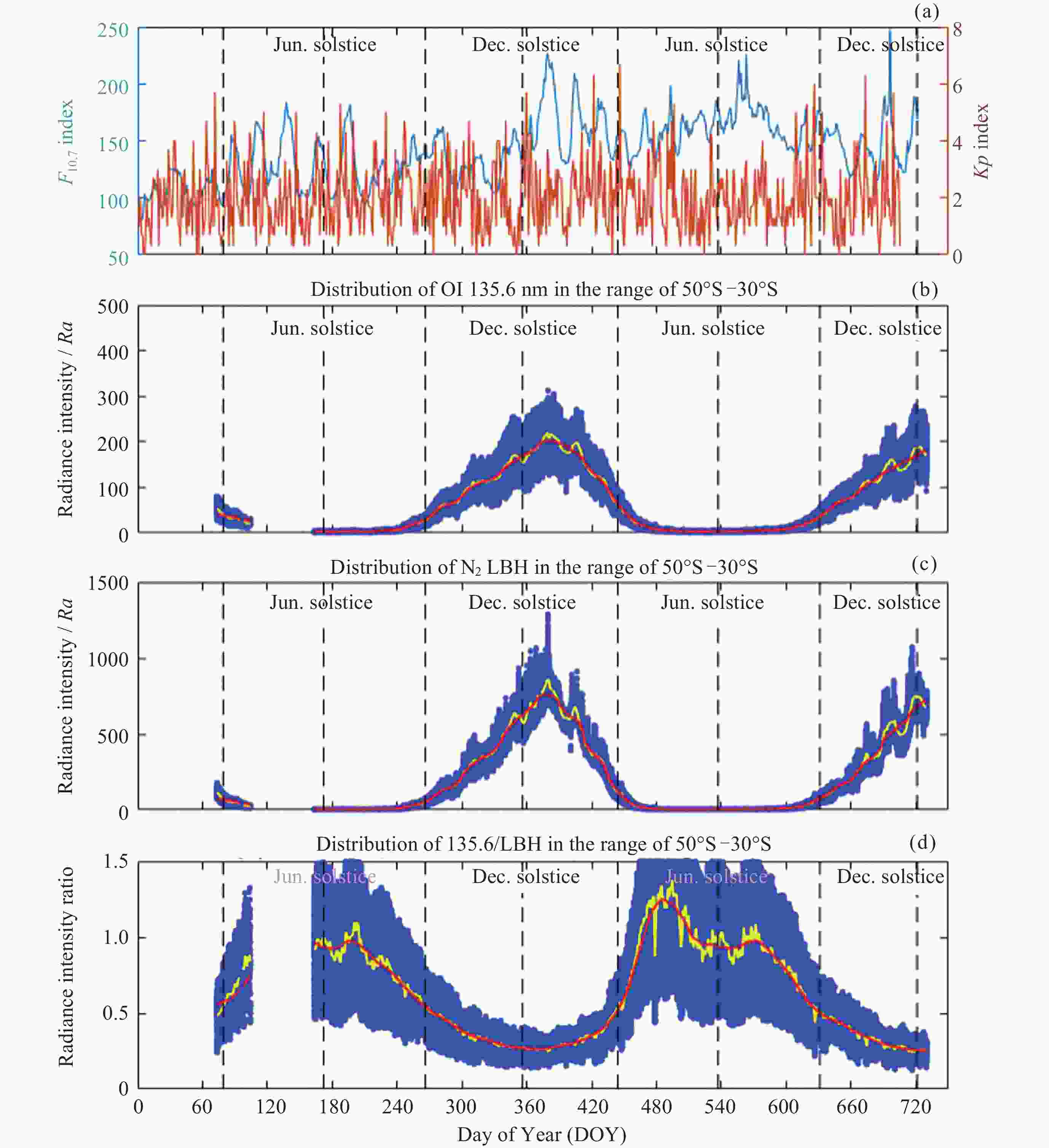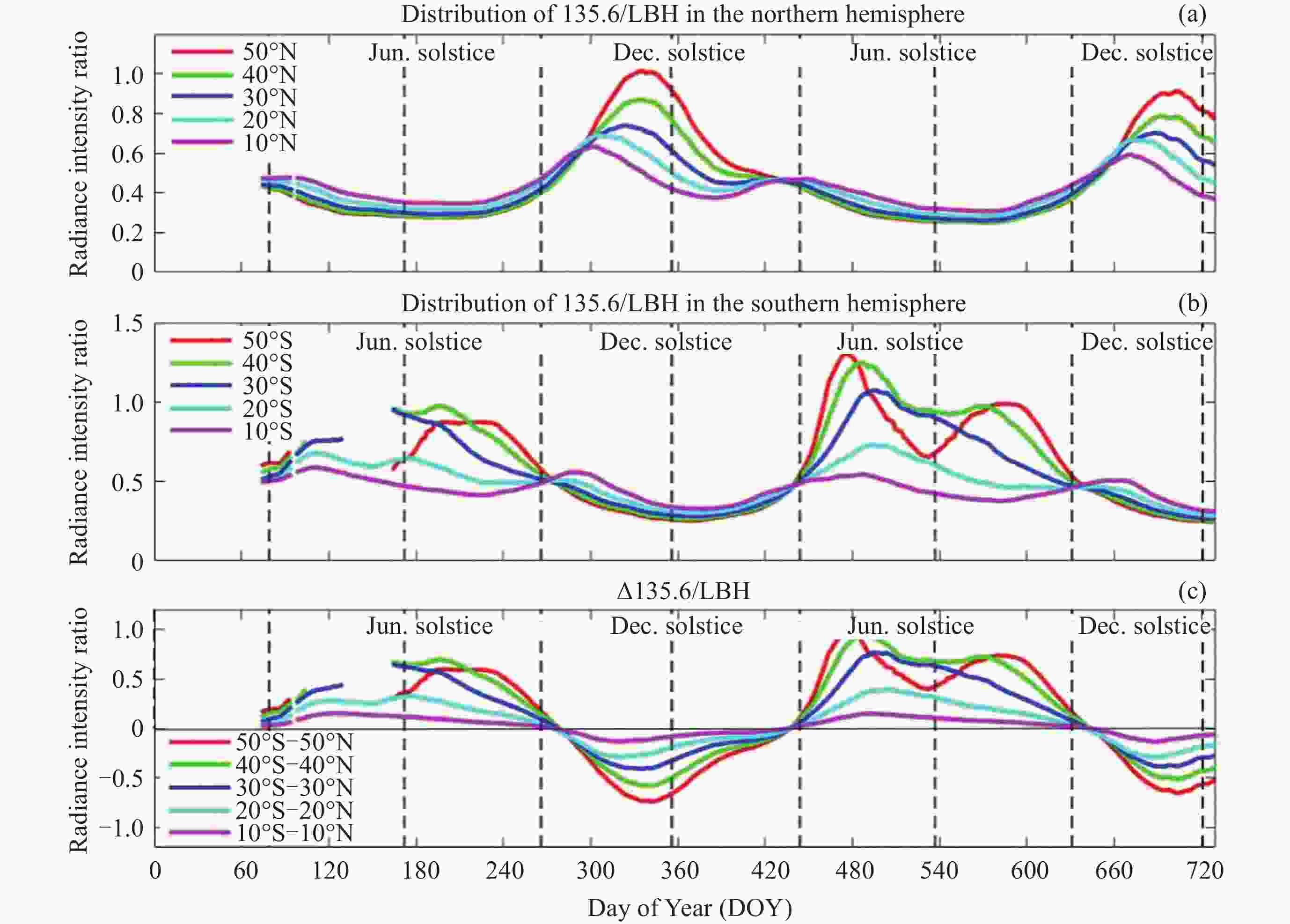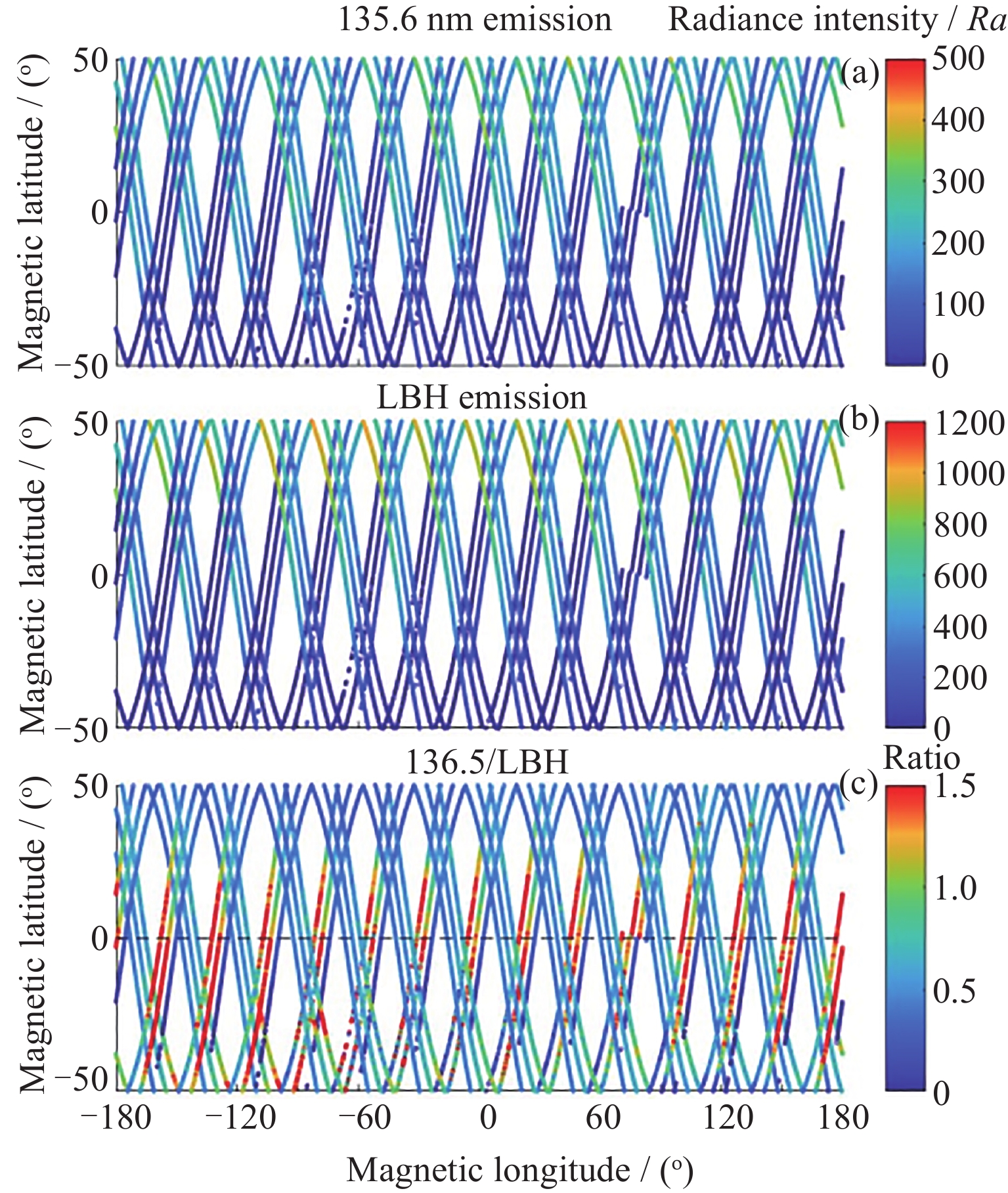Seasonal Transition Study of Thermospheric Atmospheric Composition Ratios at Twilight Based on Fengyun-3E Satellite Detection
-
摘要: 中国的多颗风云三号卫星配备了电离层光度计, 能探测到OI 135.6 nm和N2 LBH带的气辉辐射积分通量, 并计算出135.6/LBH比值. 风云三号E星作为第二代近极地太阳同步轨道卫星, 特别适合晨昏轨道的气辉观测. 该比值与热层大气成分中[O]/[N2]比值成正比, 反映了影响电离层电子密度变化的重要参数. 利用风云三号E星近两年的数据, 分析了中低纬地区135.6/LBH比值及相应参量的季节转换规律. 结果显示, OI 135.6 nm和N2 LBH带辐射强度的季节变化以冬季和夏季为主, 在春秋两季快速转变, 且这种变化随纬度而异. 135.6/LBH比值在春秋季也出现快速转换, 但其峰值和谷值时期与前述两种辐射强度不同. 中纬度地区表现为冬季高、夏季低的季节特征, 而赤道附近则相反, 呈现半年变化周期. 研究还发现, 135.6/LBH比值的季节转换存在不对称性, 受纬度和半球的影响显著. 这些结果证明, 风云卫星电离层光度计对热层大气成分比的季节、纬度和半球变化可以进行有效探测, 为电离层热层的研究、建模以及空间天气预报提供了重要依据.Abstract: Two Fengyun-3 satellites are equipped with Ionospheric Photometers capable of detecting the integrated radiant flux of the OI 135.6 nm and N2 LBH band airglow emissions, from which the ratio (referred to as the 135.6/LBH ratio) is derived. Among them, the Fengyun-3E satellite, the second generation of near-polar sun-synchronous orbit satellites, provides airglow observations during dawn-dusk orbits. The 135.6/LBH ratio is typically proportional to the thermospheric atmospheric composition ratio of [O]/[N2], reflecting variations in this ratio, which is a significant parameter influencing changes in ionospheric electron density. This paper collects data from Fengyun-3E satellite in the past two years to analyze the seasonal conversion patterns of 135.6/LBH ratio and corresponding parameters in mid to low latitudes. The results showed that the seasonal variation of OI 135.6 nm and N2 LBH band radiation intensity was mainly in winter and summer, with rapid changes in spring and autumn, and this change varies with latitude. The 135.6/LBH ratio also shows a rapid transition in spring and autumn, but its peak and valley periods are different from the aforementioned two radiation intensities. The mid latitude region shows a seasonal characteristic of high in winter and low in summer, while the opposite is true near the equator, showing a semiannual variation cycle. The study also found that there is asymmetry in the seasonal transition of the 135.6/LBH ratio, which is significantly influenced by latitude and hemisphere. These results demonstrate that the Fengyun satellite ionospheric photometer has good performance in detecting seasonal, latitudinal, and hemispheric variations in the composition ratio of the thermosphere atmosphere, providing important basis for research, modeling, and space weather forecasting of the ionospheric thermosphere.
-
Key words:
- Fengyun-3 satellite /
- Airglow /
- Thermosphere /
- Seasonal changes
-
图 3 2022年3月15日至2023年12月31日期间40°N附近纬度带17:00 LT-18:30 LT时观测结果. 蓝点为观测值, 黄线、红线分别为平滑窗设置为1天、27天的平滑曲线. 竖线给出了分点和至点的位置
Figure 3. Observational results between 17:00 LT and 18:30 LT within the latitude band near 40°N from 15 March 2022 to 31 December 2023. Blue dots represent the observational values, while the yellow and red lines correspond to the smoothed curves with a smoothing window set to 1 day and 27 days, respectively. Vertical lines indicate the positions of the equinoxes and solstices
图 8 2022年3月15日至2023年12月31日17:00 LT-18:30 LT北半球(a)和南半球(b)各纬度带的135.6/LBH比值季节变化, 以及全球不同纬度带不同时期的季节差异(c). 其中季节差异为南半球减去北半球的结果
Figure 8. Seasonal variations of the 135.6/LBH ratio at various latitude bands in the northern hemisphere (a) and southern hemisphere (b) between 17:00 LT and 18:30 LT from 15 March 2022, to 31 December 2023, as well as seasonal differences across different periods for global latitude bands (c). The seasonal differences are calculated by subtracting the values of the northern hemisphere from those of the southern hemisphere
-
[1] RISHBETH H, MÜLLER-WODARG I C F. Vertical circulation and thermospheric composition: a modelling study[J]. Annales Geophysicae, 1999, 17(6): 794-805 doi: 10.1007/s00585-999-0794-x [2] QIAN L Y, BURNS A G, WANG W B, et al. Effects of the equatorial ionosphere anomaly on the interhemispheric circulation in the thermosphere[J]. Journal of Geophysical Research: Space Physics, 2016, 121(3): 2522-2530 doi: 10.1002/2015JA022169 [3] STRICKLAND D J, BISHOP J, EVANS J S, et al. Atmospheric ultraviolet radiance integrated code (AURIC): theory, software architecture, inputs, and selected results[J]. Journal of Quantitative Spectroscopy and Radiative Transfer, 1999, 62(6): 689-742 doi: 10.1016/S0022-4073(98)00098-3 [4] STRICKLAND D J, EVANS J S, PAXTON L J. Satellite remote sensing of thermospheric O/N2 and solar EUV: 1. Theory[J]. Journal of Geophysical Research: Space Physics, 1995, 100(A7): 12217-12226 doi: 10.1029/95JA00574 [5] EVANS J S, STRICKLAND D J, HUFFMAN R E. Satellite remote sensing of thermospheric O/N2 and solar EUV: 2. Data analysis[J]. Journal of Geophysical Research: Space Physics, 1995, 100(A7): 12227-12233 doi: 10.1029/95JA00573 [6] HSU M L, RAJESH P K, LIU J Y, et al. Ionospheric electron density concurrently derived by TIP and GOX of FORMOSAT-3/COSMIC[J]. Terrestrial, Atmospheric and Oceanic Sciences, 2009, 20(1): 207-214 doi: 10.3319/TAO.2008.04.24.02(F3C) [7] YUE J, JIAN Y X, WANG W B, et al. Annual and semiannual oscillations of thermospheric composition in TIMED/GUVI limb measurements[J]. Journal of Geophysical Research: Space Physics, 2019, 124(4): 3067-3082 doi: 10.1029/2019JA026544 [8] EVANS J V. Millstone Hill Thomson scatter results for 1965[J]. Planetary and Space Science, 1970, 18(8): 1225-1253 doi: 10.1016/0032-0633(70)90214-X [9] FULLER-ROWELL T J, REES D. Derivation of a conservation equation for mean molecular weight for a two-constituent gas within a three-dimensional, time-dependent model of the thermosphere[J]. Planetary and Space Science, 1983, 31(10): 1209-1222 doi: 10.1016/0032-0633(83)90112-5 [10] PERRONE L, MIKHAILOV A V. Seasonal transitions in the thermosphere inferred from ionospheric observations[J]. Remote Sensing, 2023, 15(8): 2022 doi: 10.3390/rs15082022 [11] QIAN L Y, GAN Q, WANG W B, et al. Seasonal variation of thermospheric composition observed by NASA GOLD[J]. Journal of Geophysical Research: Space Physics, 2022, 127(6): e2022JA030496 doi: 10.1029/2022JA030496 [12] JONES JR M, SUTTON E K, EMMERT J T, et al. On the effects of mesospheric and lower thermospheric oxygen chemistry on the thermosphere and ionosphere semiannual oscillation[J]. Journal of Geophysical Research: Space Physics, 2021, 126(3): e2020JA028647 doi: 10.1029/2020JA028647 [13] QIAN L Y, SOLOMON S C, KANE T J. Seasonal variation of thermospheric density and composition[J]. Journal of Geophysical Research: Space Physics, 2009, 114(A1): A01312 [14] LUAN X L, WANG W B, BURNS A, et al. Solar cycle variations of thermospheric O/N2 longitudinal pattern from TIMED/GUVI[J]. Journal of Geophysical Research: Space Physics, 2017, 122(2): 2605-2618 doi: 10.1002/2016JA023696 [15] FULLER-ROWELL T J. The “thermospheric spoon”: a mechanism for the semiannual density variation[J]. Journal of Geophysical Research: Space Physics, 1998, 103(A3): 3951-3956 doi: 10.1029/97JA03335 [16] ZENG Z, BURNS A, WANG W B, et al. Ionospheric annual asymmetry observed by the COSMIC radio occultation measurements and simulated by the TIEGCM[J]. Journal of Geophysical Research: Space Physics, 2008, 113(A7): A07305 -
-





 石正 男, 1998年6月出生于湖北省孝感市, 中国科学院大学地球与空间探测技术专业硕士研究生, 研究方向为电离层光学遥感数据处理. E-mail:
石正 男, 1998年6月出生于湖北省孝感市, 中国科学院大学地球与空间探测技术专业硕士研究生, 研究方向为电离层光学遥感数据处理. E-mail: 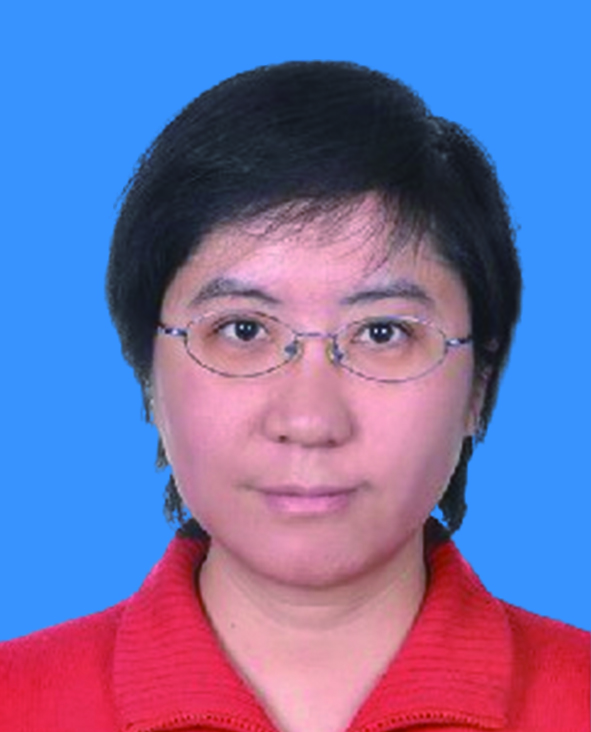
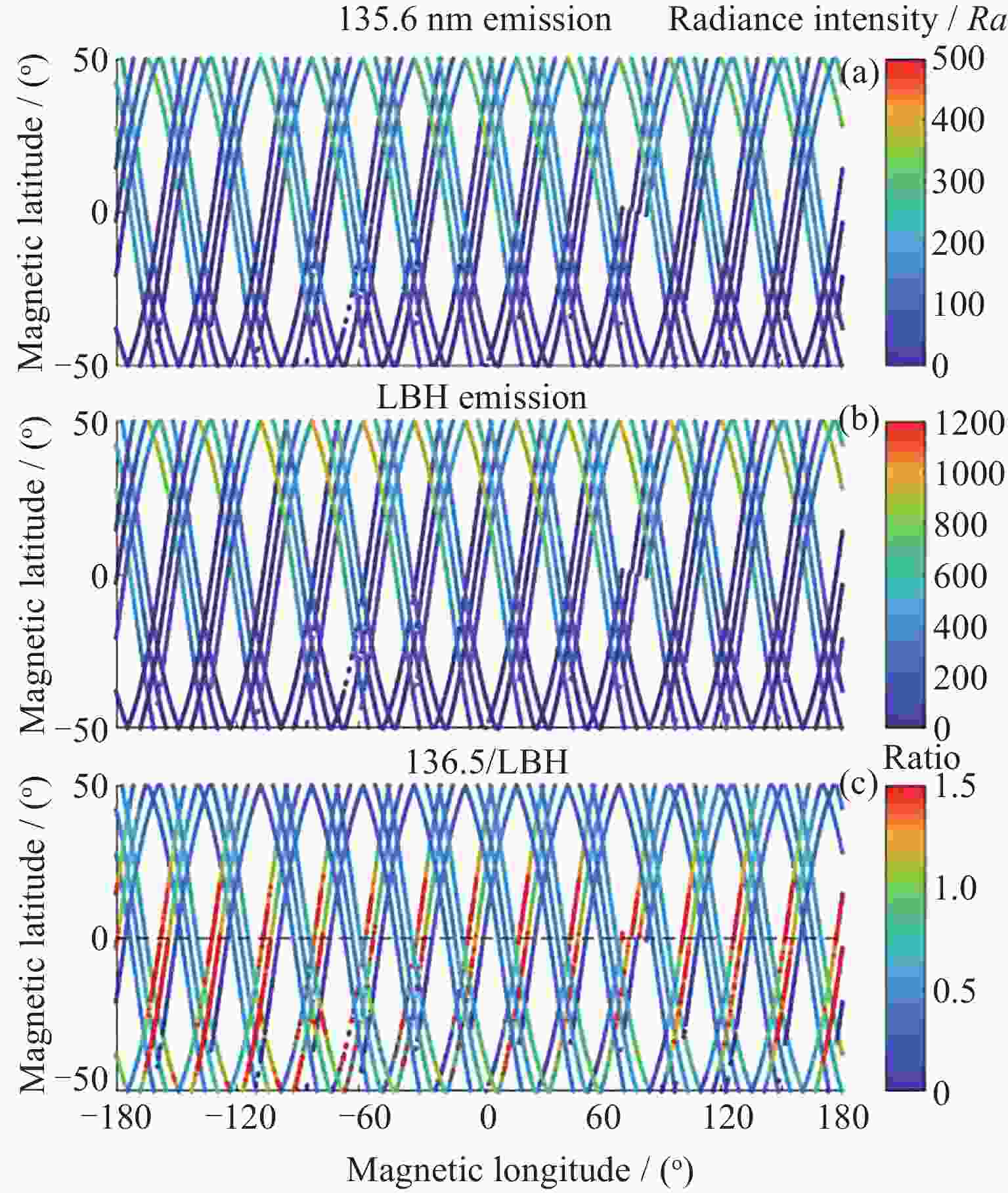
 下载:
下载:
